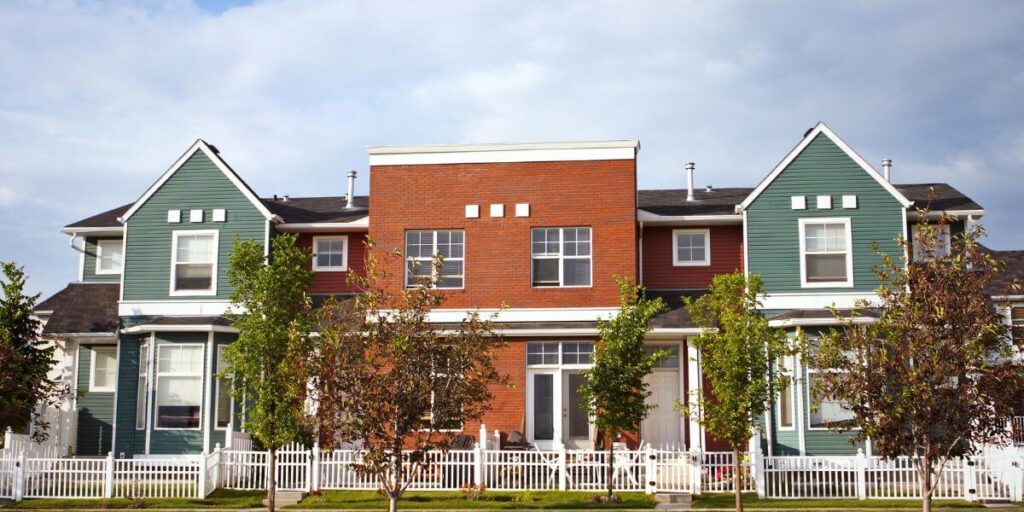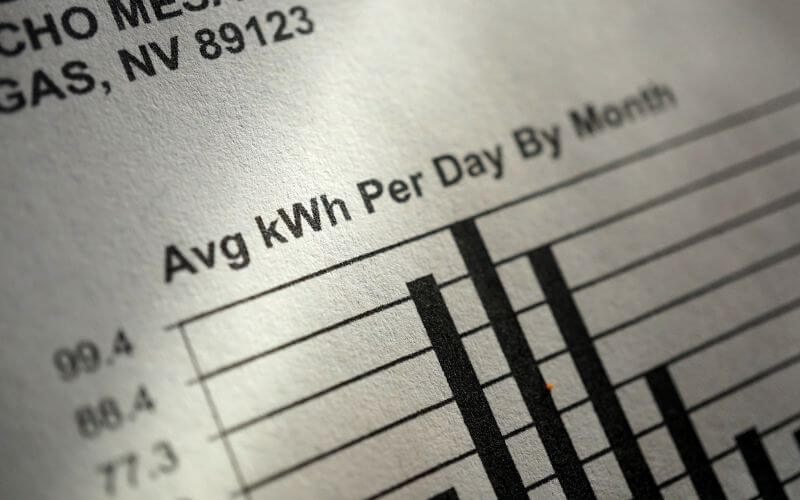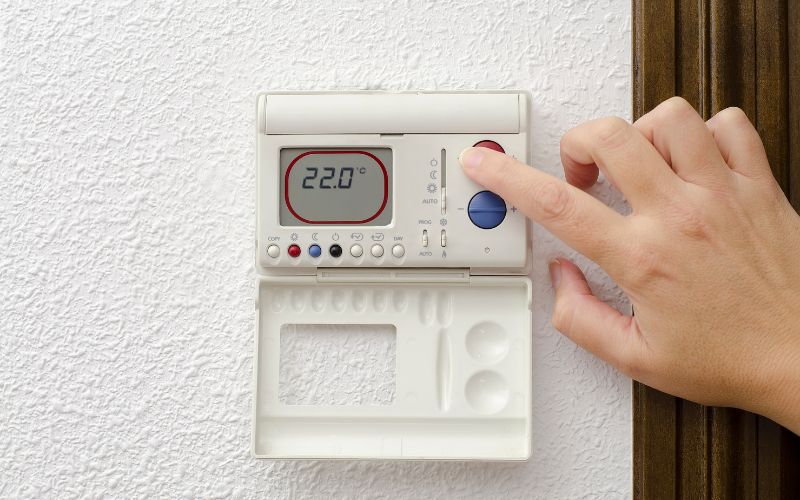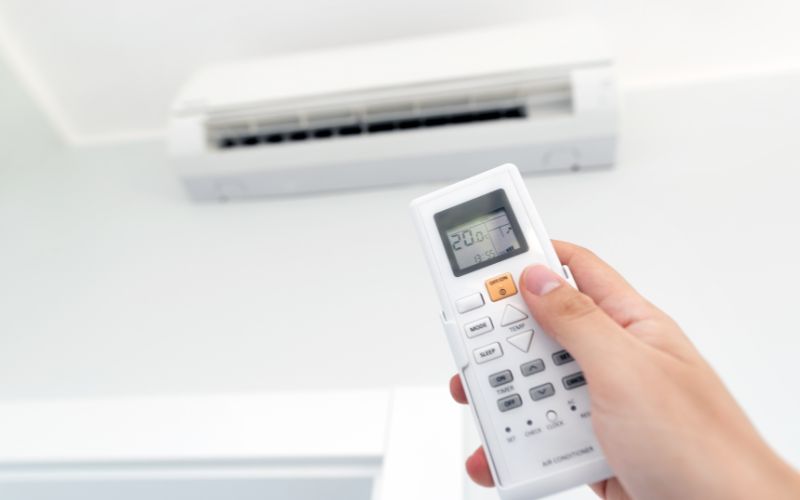Understanding the average 3-bed house electricity bill is a great way of helping you to understand how your own electricity use compares.

You can use this info to work out whether you’re tracking well against the average, or if there’s work to do to help you curb your own power use and potentially make savings on your bills.
It’s much easier to know if you should be making more of an effort to reduce your electricity use when you can see it stacked up against what others are typically using.
What is the average electricity bill for a 3-bedroom house?
The average electricity bill for a 3-bedroom house in the US is $138.43 per month. As well as the number of bedrooms, bills are influenced by a number of factors including the type of home, how many people live there, the location, and electricity rates.
That average is taken from the US Energy Information Administration but the report doesn’t specify the number of bedrooms. It’s based on being a single-family detached home. However, as the average detached home has three bedrooms, we can use this figure as a reasonably reliable guide.
Next, we’ll look at how a detached home stacks up against other property types, and how the region where you live affects your bill.
Plus it’s worth exploring the average usage of different appliances in your home, all of which will help you to paint a picture of your own electricity usage.

3 Bedroom House vs Other Property Types
While the EIA doesn’t tell us information about the electricity usage of 3-bedroom homes exactly, it does break down property types to a limited degree.
Here’s a rundown of the different types of property, and their average electricity usage and costs:
| Property Type | Average monthly consumption | Average monthly cost | Average annual consumption | Average annual cost |
|---|---|---|---|---|
| Detached home | 988.79 kWh | $138.43 | 11865.5 kWh | $1,661.17 |
| Attached home | 690.06 kWh | $96.60 | 8280.75 kWh | $1,159.31 |
| Apartment (small building, 2-4 units) | 553.52 kWh | $77.49 | 6,642.25 kWh | $929.92 |
| Apartment block (5+ units) | 476.85 kWh | $66.76 | 5,722.25 kWh | $801.12 |
| Mobile home | 967.73 kWh | $135.48 | 11612.75 kWh | $1,625.79 |
It’s unsurprising that a detached home, which a 3-bedroom home is likely to be, has the highest consumption. These properties tend to have the highest square footage, and when you consider that the biggest electricity consumption comes from cooling and heating your home, more space to cool/heat means more power is needed.
Suggested read: How Many kWh Per Day Is Normal?
But what may surprise you is how they only use marginally more power than a mobile home, which would normally have the least square footage. And that tells you just how important proper insulation is.
The ability of a property to retain heat during winter, or cooler air during summer, is one of the major driving factors of power consumption.

Plus, the states with the most mobile homes in the US are Texas, Florida, and Louisiana. The south is hotter, and so more cooling is needed – hence more power being consumed (Source).
On that, let’s take a look at how location can impact your electricity bill.
How Does Location Affect Your Electricity Bill?
There are two ways that the location of your home impacts your electricity bill.
Electricity Use
Depending on where you live, you’ll use more or less power than other parts of the country. And again, this comes down to how much you need to heat or cool your home.
Here’s a look at how the region in which you live affects your power consumption:
| Region | Average monthly consumption | Average monthly cost | Average annual consumption | Average annual cost |
|---|---|---|---|---|
| Northeast | 684.25 kWh | $138.43 | 8211 kWh | $1,149.54 |
| Midwest | 797.25 kWh | $111.62 | 9567 kWh | $1,339.38 |
| South | 1157.92 kWh | $162.11 | 13895 kWh | $1,945.30 |
| West | 710.42 kWh | $99.45 | 8525 kWh | $1,193.50 |
Air conditioning is the highest consumer of power in the home (more on that below) which is why it’s no surprise that the south consumes the most electricity by far – around 40% more than in the Northeast and West, and 32% more than the Midwest.
The result is an average electricity bill of almost $2,000 a year based on the average cost of electricity in the US. But that doesn’t paint the whole picture…
Electricity Cost
The cost of electricity also varies depending on where in the country you live. And these aren’t marginal differences – the extremes are pretty wild.
The average overall cost of electricity in the US is $0.14 per kilowatt-hour used. But there are some states that pay a lot less, and some that pay a huge amount more.
The cheapest electricity in the US according to the last statistics collated by the EIA is in Louisiana, with an average price per kWh of 9.67 cents. Idaho and Washington are the other states that managed to keep their prices below 10 cents.
And then a lot of states are within a 10-14 cent bracket. But there are some where you’ll pay more, including the New England states where prices range from Maine’s 16.81 cents up to 22.71 cents in Connecticut.
New York is slightly higher than average at 18.36 cents, as is Michigan at 16.26 cents. California is another that’s high, at 20.45 cents.
But it’s the Pacific Noncontiguous states where the prices are felt the hardest. Alaska’s electricity price averages at 22.57 cents, and Hawaii’s is a mammoth 30.28 cents, more than 3 times that of Louisiana, Idaho, and Washington.
But despite the warm weather in Hawaii, air-con use is lower, and therefore so is the average monthly consumption. While the total monthly average in the US is 893 kilowatt-hours per month, Hawaii’s is just 537 kilowatt-hours.
When you look at combined average cost and average usage, you can see which states are the cheapest and which are the most costly. The cheapest electricity bills are for residents of DC, averaging $88.89 per month.
Hawaii is the most expensive due to that sky-high cost per unit, averaging a bill of $162.66 per month. But Connecticut isn’t far behind at $161.55.
See the full breakdown by state here.
What Uses The Most Electricity?
When determining how your own electricity use compares to the rest of the country, it’s good to look at the breakdown of which appliances in the home are using the most power. According to the EIA, here’s the averages:
| Category | % of consumption | Average consumption (based on average total consumption) |
|---|---|---|
| Air conditioning | 16.9% | 151.086 kWh |
| Space heating | 14.8% | 132.312 kWh |
| Water heating | 13.7% | 122.478 kWh |
| Lighting | 10.3% | 92.082 kWh |
| Refrigerators | 7% | 62.58 kWh |
| TVs and related | 6.9% | 61.686 kWh |
| Clothes dryers | 4.5% | 40.23 kWh |
| Ceiling fans | 1.8% | 16.092 kWh |
| Air handlers for heating | 1.6% | 14.304 kWh |
| Separate freezers | 1.6% | 14.304 kWh |
| Cooking | 1.4% | 12.516 kWh |
| Dehumidifiers | 1.2% | 10.728 kWh |
| Microwaves | 1.1% | 9.834 kWh |
| Pool pumps | 1% | 8.94 kWh |
| Air handlers for cooling | 0.8% | 7.152 kWh |
| Humidifiers | 0.6% | 5.364 kWh |
| Dishwashers | 0.6% | 5.364 kWh |
| Clothes washers | 0.4% | 3.576 kWh |
| Hot tub heaters | 0.4% | 3.576 kWh |
| Evaporative coolers | 0.3% | 2.682 kWh |
| Hot tub pumps | 0.1% | 0.894 kWh |
| All other misc | 13% | 116.22 kWh |
As I mentioned already, air-con is the main device for consuming power, which is why warmer states use more electricity. But heating isn’t far behind either. Living somewhere with extremely cold winters will also drive your bills up.

What Matters More: Bedrooms or Occupancy?
Take a look at the top five consumers of power in the home in the table above: air-conditioning, space heating, water heating, lighting, and refrigerators.
Most homes that have air-con have a central system, while most heating systems are central too. Sure you can have portable or single-room appliances for each, but in most cases when you’re using the air-con or the heating, you’re applying the temperature change to the whole house.
So, it doesn’t matter whether you’re living alone or with a family of 5 – what impacts power usage is the number of bedrooms since that’s more space to heat or cool.
It’s the same with lighting too – more rooms equals more lights. And it’s rare that families have more than one refrigerator even if there are more people in the home.
Suggested read: How Much Electricity Does A Mini Fridge Use?
It’s only water heating that’s affected by occupancy – the number of people showering in particular (and how long for!).
This is why a 3-bedroom home will broadly use a lot more electricity than many smaller properties, but a lot less than a 4-bed or 5-bed property too.

The Bottom Line
There is still no easy way of looking at the average 3-bedroom electricity bill in the US, but using all this data you can at least begin to compare your own bill against similar depending on your property type and where you live.
Of course, it’s not realistic to then think about a complete life upheaval to move somewhere with lower electricity costs, but seeing these stats might get you thinking about changes you can make to help get your own bills under control.
Even if it’s as simple as realizing just how much power you’re using for cooling and heating, and how you can better insulate your home to keep those costs down – that can make a huge difference over the lifetime of your utility bills.
